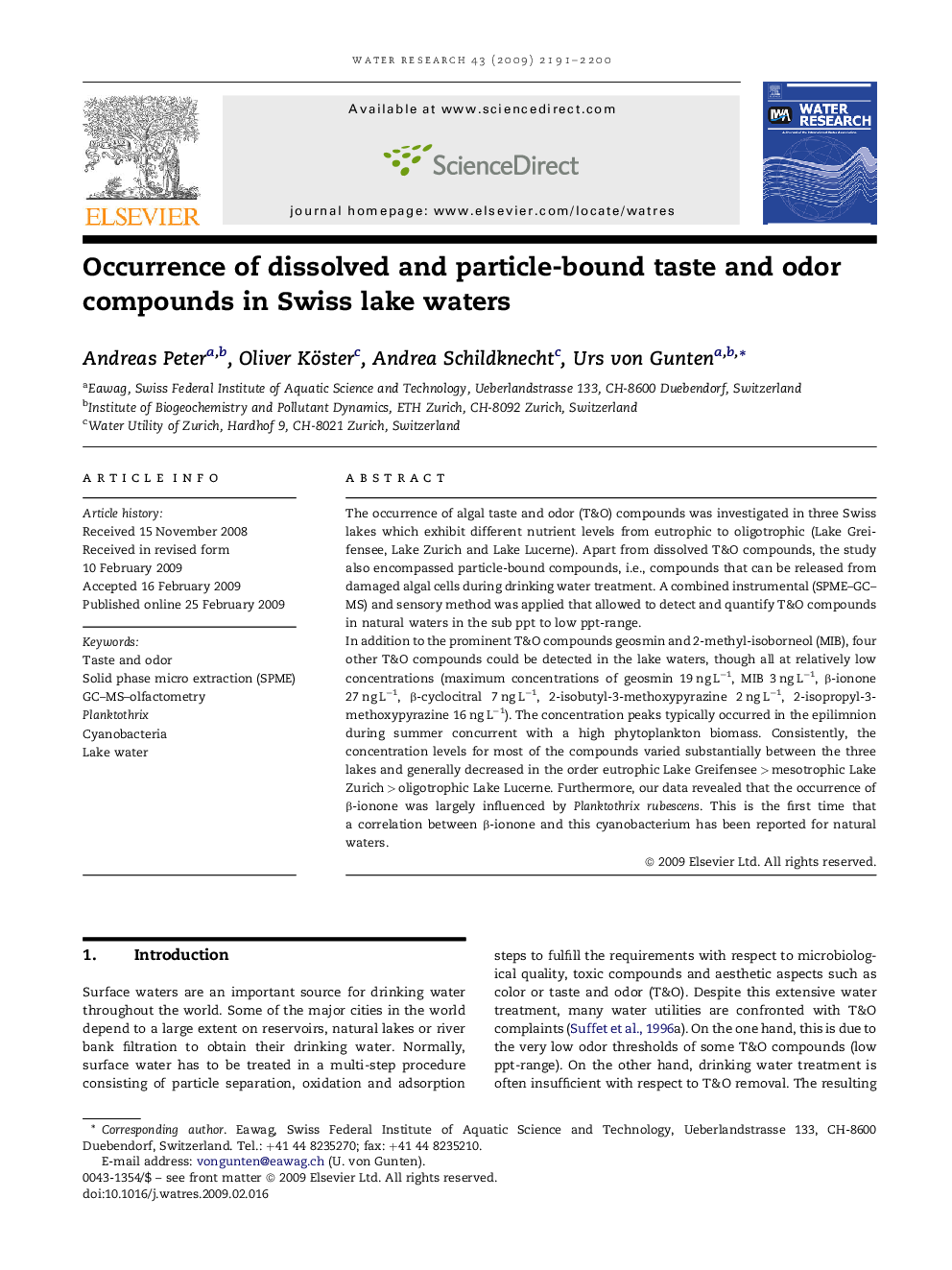| Article ID | Journal | Published Year | Pages | File Type |
|---|---|---|---|---|
| 4485006 | Water Research | 2009 | 10 Pages |
The occurrence of algal taste and odor (T&O) compounds was investigated in three Swiss lakes which exhibit different nutrient levels from eutrophic to oligotrophic (Lake Greifensee, Lake Zurich and Lake Lucerne). Apart from dissolved T&O compounds, the study also encompassed particle-bound compounds, i.e., compounds that can be released from damaged algal cells during drinking water treatment. A combined instrumental (SPME–GC–MS) and sensory method was applied that allowed to detect and quantify T&O compounds in natural waters in the sub ppt to low ppt-range.In addition to the prominent T&O compounds geosmin and 2-methyl-isoborneol (MIB), four other T&O compounds could be detected in the lake waters, though all at relatively low concentrations (maximum concentrations of geosmin 19 ng L−1, MIB 3 ng L−1, β-ionone 27 ng L−1, β-cyclocitral 7 ng L−1, 2-isobutyl-3-methoxypyrazine 2 ng L−1, 2-isopropyl-3-methoxypyrazine 16 ng L−1). The concentration peaks typically occurred in the epilimnion during summer concurrent with a high phytoplankton biomass. Consistently, the concentration levels for most of the compounds varied substantially between the three lakes and generally decreased in the order eutrophic Lake Greifensee > mesotrophic Lake Zurich > oligotrophic Lake Lucerne. Furthermore, our data revealed that the occurrence of β-ionone was largely influenced by Planktothrix rubescens. This is the first time that a correlation between β-ionone and this cyanobacterium has been reported for natural waters.
